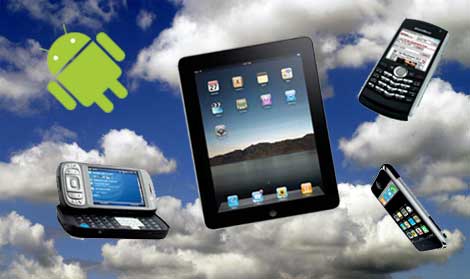
A new survey of mobile cloud computing does a good job in defining mobile cloud computing and how it is going to impact cloud computing in general. Firstly, mobile cloud computing is defined as cloud computing extended by mobility and a new ad-hoc infrastructure based on mobile devices. In essence, mobile users are provided with data storage and processing services on a cloud computing platform rather than on the mobile devices themselves.
A branch of cloud computing
According to the survey, mobile cloud computing is emerging as one of the most important branches of cloud computing, and is still in its infancy. Therefore it‘s highly relevant to clarify the confusion that has arisen around mobile cloud computing.
From a simple perspective, mobile cloud computing can be thought of as infrastructure where data and processing could happen outside of the mobile device, enabling new types of applications such as context-aware mobile social networks. As a result, many mobile cloud applications are not restricted to powerful smartphones, but to a broad range of less advanced mobile phones and, therefore, to a much larger subscriber segment. From a smartphone perspective in particular, mobile cloud computing opens up possibilities for a new class of applications by leveraging handset centric features and network related information, such as GPS and/or cell-based location information, etc.
Special characteristics of mobile cloud computing
The survey recognizes the potential opportunities from utilizing available mobile handset features and "to harness collective sensing, storage, and computational capabilities of multiple networked wireless devices to create a distributed infrastructure that supports a wealth of new applications."
Furthermore, mobile cloud computing extends cloud computing by providing enhanced service availability and by exploiting information about a user’s location, context and network intelligence, thereby considerably improving user experience. Leveraging the mobile device storage, sensing and processing resources for optimizing cloud-based application also adds to better user experience.
Measures to address bandwidth limitations
The obstacles facing mobile cloud computing include limitation of wireless bandwidth capacity and fluctuations in network service delivery. Mobile technology assumes a shared bandwidth capacity, so that users within any particular mobile cell share the available bandwidth while accessing the data network, e.g. the Internet. To overcome this intrinsic limitation, and to address the increasing bandwidth demand, wireless networks are continuously being upgraded – with the IP-based 4G wireless broadband network technology as the ultimate long term goal.
However, other means are also being developed and implemented. One interesting alternative involves instantiating resource-intensive applications on distributed cloudlets, or cloud servers, and then using that service over a wireless LAN. Also, HTML5 data caching capabilities enable applications to work offline, bringing mobile Web applications closer to parity with native applications. By offering offline data caching, cloud-based applications can operate much the same as their device-based counterparts, i.e. if the Internet connection goes down, the application keeps on working. HMTL5 also presents a host of other features that can be deployed in mobile applications making them platform independent.
In summary, mobile cloud computing has emerged as a new paradigm and extension of cloud computing and will undoubtedly grow very quickly in the coming months and years.




